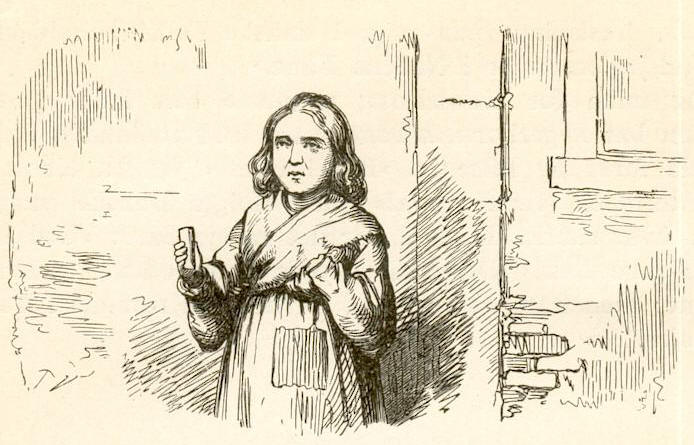Cold and warm relationships: A universal metaphor?
Two papers have recently come out on the relationship between physical and interpersonal warmth.
 Pedersen’s illustration of Andersen’s tale “The Little Match Girl”
Pedersen’s illustration of Andersen’s tale “The Little Match Girl”
The first, by Zhong and Leonardelly, shows that feelings of social exclusion can literally make you feel cold, while the second, by Williams and Bargh, shows that feelings of warmth make you like people and be nice to them (well, slightly more so). Below are the abstracts and some questions to our fellow anthropologists. (You can find an ungated version of the first paper here).
Zhong, C. B., & Leonardelli, G. J. (2008). Cold and lonely: Does social exclusion literally feel cold?. Psychological Science, 19(9), 838-842.
Metaphors such as icy stare depict social exclusion using cold-related concepts; they are not to be taken literally and certainly do not imply reduced temperature. Two experiments, however, revealed that social exclusion literally feels cold. Experiment 1 found that participants who recalled a social exclusion experience gave lower estimates of room temperature than did participants who recalled an inclusion experience. In Experiment 2, social exclusion was directly induced through an on-line virtual interaction, and participants who were excluded reported greater desire for warm food and drink than did participants who were included. These findings are consistent with the embodied view of cognition and support the notion that social perception involves physical and perceptual content. The psychological experience of coldness not only aids understanding of social interaction, but also is an integral part of the experience of social exclusion.
Williams, L. E., & Bargh, J. A. (2008). Experiencing physical warmth promotes interpersonal warmth. Science, 322(5901), 606-607.
“Warmth” is the most powerful personality trait in social judgment, and attachment theorists have stressed the importance of warm physical contact with caregivers during infancy for healthy relationships in adulthood. Intriguingly, recent research in humans points to the involvement of the insula in the processing of both physical temperature and interpersonal warmth (trust) information. Accordingly, we hypothesized that experiences of physical warmth (or coldness) would increase feelings of interpersonal warmth (or coldness), without the person’s awareness of this influence. In study 1, participants who briefly held a cup of hot (versus iced) coffee judged a target person as having a “warmer” personality (generous, caring); in study 2, participants holding a hot (versus cold) therapeutic pad were more likely to choose a gift for a friend instead of for themselves.
The authors of both studies seem to assume that this link is universal, perhaps based on early feelings of warmth being associated with closeness to caregivers. Do some people have experiences with similar associations between physical and interpersonal warmth in other cultures? Or, more interestingly maybe, of opposite associations? Could the link be reversed in cultures in which feeling cool is valued (for climatic or other reasons)?
2 Comments
You must be logged in to post a comment.


Nicola Knight 10 November 2008 (10:41)
I haven’t seen the papers, so I will limit myself to a comment that may well have been addressed by Williams and Bargh. I wonder how much of these effects is explainable in terms of the relative effect of warmth on well-being. In other words, it is possible that the relative ambient temperature influences what we perceive to be comforting. In a relatively cold psychology lab, a warm cup of coffee or therapeutic pad may feel better than they would in a stuffy, humid basement room in the summer. This seems corroborated by the fact that the most common experimental setup to investigate resistance to pain requires participants to place their hands in cold water. Has the relative contribution of ambient temperature been controlled for in this study? Of course, if this were true it still would not explain the findings of Zhong & Leonardelli’, who appear to give evidence for the opposite directionality (social exclusion –> feelings of coldness and desire for warmth), but it may well reduce the scope of the claim.
Hugo Mercier 11 November 2008 (09:49)
Funnily enough, I asked myself the same questions reading the papers, but I ended up thinking that the relationship between warmth and feeling of inclusion was not only due to mediation through comfort. One control they did in the first experiment was to ask participants to rate a non social object (a car). There was no difference between conditions (cold/hot cup of coffee). So the effect seems to be specific to interpersonal relationships. Moreover, in the second experiment, the participants in the warm pad condition choose to give an offer for some free food to a friend instead of keeping it for themselves. It’s not clear why simply feeling more comfortable would make one more generous. In both cases one would have to explain why feeling more comfortable has these specific effects (awarding higher grades to an individual but not a car, being more generous). Moreover, as Nicola says, one would still have to account for the reverse findings of the other paper. So it does seem that the more economical explanation is that there is a link between feeling warm and feeling socially included.